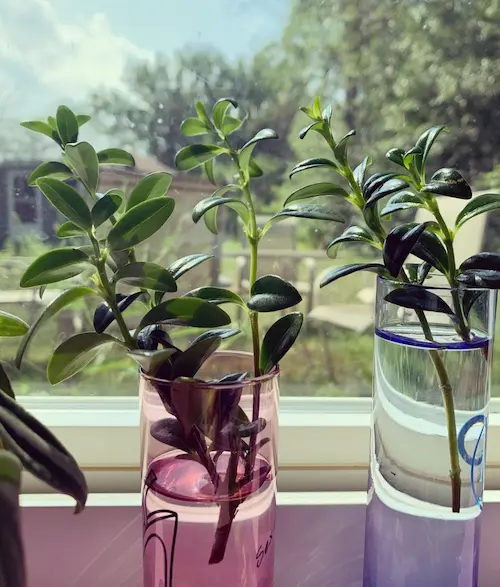Goldfish Plant: Grow & Care for Nematanthus Gregarious
Written by Iris
Dec 24 2021
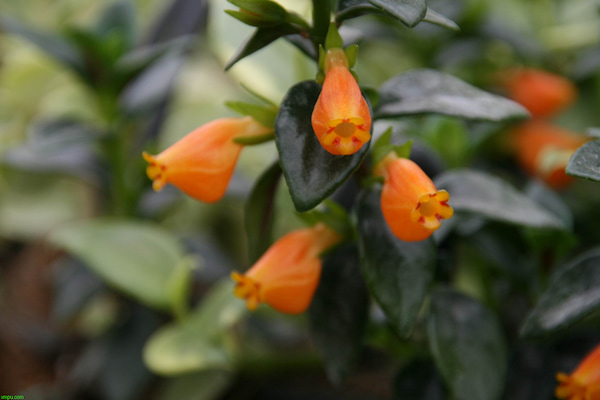
Goldfish Plant (Scientific Name: nematanthus gregarious.) is a perennial herb with non-fluffy stems, which gets its name because the flowers look so much like goldfish. Goldfish plant flower often bloom in spring, lastign more than 20 days. A large plant can bloom more than 100 flowers at the same time, and the flowers are large and colorful, quite spectacular, so it is an ideal shade loving plant for leaf and flower appreciation. Goldfish Plant can not only be foliage plant but also flower-watching plant, which is suitable for an indoor potted plant or hanging potted plant, placed on the top of the cabinet, a few shelves or windowsill. Under ideal conditions and proper care, the goldfish plant blooms prolifically in a variety of reds, oranges, yellows and tricolors.
Goldfish plant is a fast-growing and easy-care plants. It likes high temperature and high humidity. Under high temperature in summer, Goldfish plant grows very slowly or almost stops growing. At this time, appropriate shading measures should be taken to make it grow vigorously and not shed its leaves. Goldfish plant is suitable for potted plants in greenhouses and indoor gardens, and can also be used as hanging plants in family rooms. Next, this article will give you a detailed presentation of the growing tips and precautions for the care of goldfish flowers.
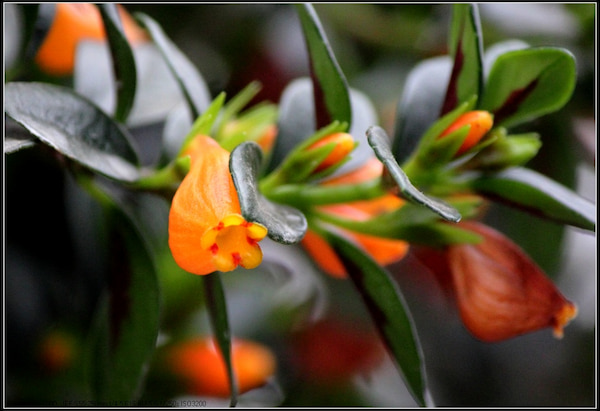
Generally keep the temperature at about 20℃, goldfish plant cuttings can germinate in 3-4 weeks. After germination, the cuttings are incubated in the substrate for a period of time. When the growth of cuttings is stable, they can be transplanted. Plants propagated through stem cuttings will only flower once they're fully established in spring or summer the following year.
If possible, try to use tepid water for your Goldfish plant. Cold water can shock this plant, which can cause drooping leaves. Fill a watering can and allow the water to sit overnight until it reaches room temperature. Also, chemicals such as chlorine and fluoride will evaporate from the water. When watering your Goldfish plant, try not to splash too much water on the leaves. If you already have African violets in your home, you probably know that wet leaves will develop brown spots and mold.
If you don't have time to water, place the goldfish plant pot in a shallow bowl of fresh water to keep the humidity in a small range. In winter, goldfish plant will be into the dormant period, and it grows slowly, so it is necessary to reduce the amount of watering, keep appropriate dry until the buds appear. Once you see the buds, you can increase the amount of water appropriate to prepare for flowering.4.jpg)
This plant loves humidity. You will have the most success growing it near a humidifier or a humidity tray. You need to take the time to mist its leaves daily with room-temperature water. Many growers find that a goldfish plant not getting enough humidity is the reason that it does not thrive.
The amount of fertilizer requirement by Goldfish Plant depends on the growth of the plant. Usually, when the seedlings are transplanted, add 20-30 organic compound fertilizer particles in 1/3 of the basin soil, and then bury organic fertilizer again when repotting. Apply 1-2 times a month thin fertilizer. Before flowering and when flowering, adding phosphorus potassium fertilizer can promote more flowesr to bloom. The application of thin liquid fertilizer is mainly in spring and autumn, and apply once every 10 to 14 days. In Autumn, apply Goldfish Plant with nitrogen fertilizer based liquid fertilizer to promote lush branches and leaves, and in spring apply more phosphorus and potassium fertilizer to promote flower more beautiful color. Fertilization should be stopped when goldfish plants stop growing in summer and after dormancy in winter so as not to cause fertilizer damage.2.jpg)
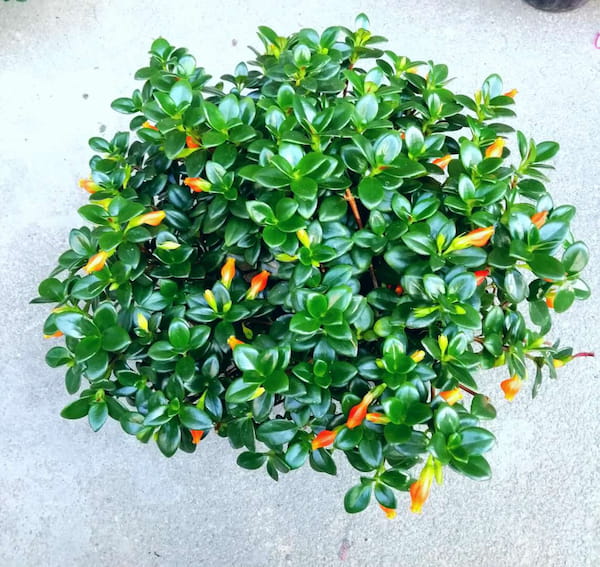
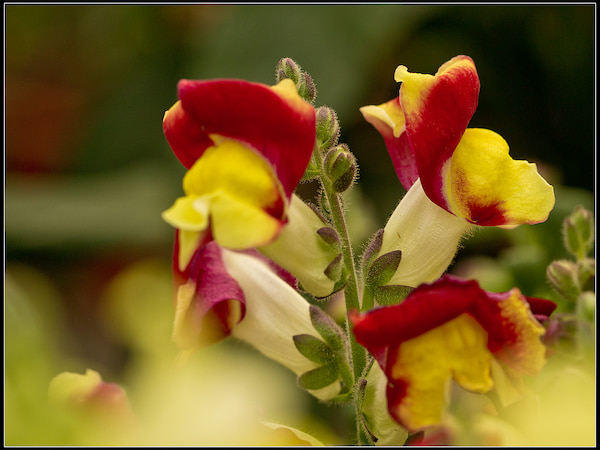
3.jpg)
Goldfish plant is a fast-growing and easy-care plants. It likes high temperature and high humidity. Under high temperature in summer, Goldfish plant grows very slowly or almost stops growing. At this time, appropriate shading measures should be taken to make it grow vigorously and not shed its leaves. Goldfish plant is suitable for potted plants in greenhouses and indoor gardens, and can also be used as hanging plants in family rooms. Next, this article will give you a detailed presentation of the growing tips and precautions for the care of goldfish flowers.
| Scientific Name | Nematanthus gregarious |
| Common Name | Goldfish plant |
| Plant Type | Flowering Perennial |
| Plant Size | Stems 2 to 3 in. long, branches up to 3 ft. long |
| Bloom Time | Spring, last about 20 days |
| Flower Color Variety | Red, orange, yellow, tircolor |
| Native Areas | Central America, South America, Mexico |
| Lighting Requirements | Bright light but not direct light |
| Soil Care | Slightly acidic well-drained soil |
| Watering | Keep the soil moist at all times |
| Temperature | Growth temperature is 16-26℃. |
| Repotting | Be repotted every 2 years |
| Propagation | Can be reproduced from stem cuttings or division or seeds |
| Poisonous | Goldfish plant is not poisonous and safe to cats and dogs. |
How to Propagate Goldfish PlantGoldfish Plant Propagation with DivisionGoldfish Plant Propagation with Stem CuttingsHow to Care for Goldfish PlantLight for Goldfish PlantSoil for Goldfish PlantGoldfish Plant WateringGoldfish Plant Temperature & Humidity CareFertilizer for Goldfish PlantPruning Goldfish PlantRepotting Goldfish PlantGoldfish Plant Pests & Diseases CareGoldfish Plant Care FAQWhy does My Goldfish Plant Have No Flowers?How Long do Goldfish Plants Live?Is Goldfish Plant Toxic to Cats?Why Goldfish Plant Lose Leaves?Is Goldfish Plant Succulent?
How to Propagate Goldfish Plant
The easiest ways to propagate Goldfish plant are either through stem cuttings or plant division. In general, the best time to propagate your plants is in spring and summer. Propagating during its growth period gives the cuttings a better chance to root and establish new plants. Growing the goldfish plant from seeds can be very tricky. The main reason for this is that flowers growing outside their natural habitat are difficult to pollinate. If there's no pollination, the seed will not develop. As a result, finding goldfish plant seeds for sale is often almost impossible. If you want to grow more of this plant in your home, we recommend propagating it through either stem cuttings or division. Both methods work well for the Goldfish plant, and they're more reliable than growing it from seed.
Goldfish Plant Propagation with Division
The best time to use this method is when you’re also repotting your Goldfish plant.- Gently remove the plant from the soil, taking care not to damage the roots.
- Wipe as much soil from the roots as you can.
- Using your hands, gently pull the stems and roots apart to divide the main plant. Depending on how big your Goldfish plant is, you can divide it into 2 or 3 bunches.
- Pot each divided plant in a 6 inch (15 cm) container filled with loose, well-draining soil.
Goldfish Plant Propagation with Stem Cuttings
Goldfish plant can be propagated from branch cutting and stem cutting, which can be carried out all year round. The best propagation time is in spring or after blooming indoors.- Use a sharp, clean knife to cut a stem section about 4 inches (10 cm long). Pick stems that don’t have any flowers or buds on them, and cut below the leaf node.
- Take 3 or 4 cuttings and plan to plant them together in the same pot so that the new plant will have a bushy style.
- Remove any bottom leaves from the stem so that the bottom inch is left bare.
- River sand or vermiculite culture soil is the best choice for propagating goldfish plant from cuttings. If not, loose and breathable rural soil can also be used.
- Insert cuttings into the matrix, leaving the leaves and a small part of the branches to stay outside the soil, and then water throughly and cover with thin plastic film.
- Keep the cuttings in a warm, bright spot but away from direct sunlight.
Generally keep the temperature at about 20℃, goldfish plant cuttings can germinate in 3-4 weeks. After germination, the cuttings are incubated in the substrate for a period of time. When the growth of cuttings is stable, they can be transplanted. Plants propagated through stem cuttings will only flower once they're fully established in spring or summer the following year.
Read More: How to Propagate Goldfish Plant
How to Care for Goldfish Plant
Goldfish Plants like warm and humid environments. They are drought resistance but not waterlogging resistance; It is best to grow on weak acid soil with loose fertility and good drainage.Light for Goldfish Plant
Goldfish Plants are native to tropical areas and enjoy warm, humid and shading environment. They can be gorwn in bright scattered light place. In summer, it should avoid direct strong sunlight and is best to move to a cool and ventilated place for caring, otherwise the strong sunlight is easy to lead soft rot on the stems to death. Winter and spring are the flowering seasons of goldfish plant, which needs plenty of sunlight. That's what makes the flower color beautiful. For beautiful blossoms this plant needs enough light to thrive. The goldfish plant needs around 13 hours of direct light every day to bloom prolifically. Depending on your conditions, an eastern window may do except during the winter months.Soil for Goldfish Plant
The basin soil of goldfish plant should be loose and fertile, drainage and good aeration, rich in organic matte. It had better use peat soil or leaf rot soil, or soil with perlite and peat soil mixed by different proportions, so that it is weak acid to facilitate goldfish plant growth.Goldfish Plant Watering
Water your Goldfish plant weekly throughout spring and summer, then cut back on your watering schedule in winter. The soil should be kept moist but not soaked to prevent fungal problems such as root rot. Ideally, you should only water the plant when the soil’s top inch feels dry to the touch. You can either use your finger to test this or use a moisture meter for more accurate results.If possible, try to use tepid water for your Goldfish plant. Cold water can shock this plant, which can cause drooping leaves. Fill a watering can and allow the water to sit overnight until it reaches room temperature. Also, chemicals such as chlorine and fluoride will evaporate from the water. When watering your Goldfish plant, try not to splash too much water on the leaves. If you already have African violets in your home, you probably know that wet leaves will develop brown spots and mold.
If you don't have time to water, place the goldfish plant pot in a shallow bowl of fresh water to keep the humidity in a small range. In winter, goldfish plant will be into the dormant period, and it grows slowly, so it is necessary to reduce the amount of watering, keep appropriate dry until the buds appear. Once you see the buds, you can increase the amount of water appropriate to prepare for flowering.
4.jpg)
Goldfish Plant Temperature & Humidity Care
The goldfish plant thrives between 60 and 78 °F (16-26℃). Too high or too low temperature will affect the growth. In the warm spring and autumn season, branches can keep pumping new leaves; When the temperature is lower than 10℃ in winter, the goldfish plant will be dormant so you need to move it indoors. If the temperature is lower than 5℃, it is easy to freez injury. In addition to low temperature, if the temperature continues to exceed 30°C, the goldfish plant leaves will fall. At high temperature in summer, goldfish plant growth is very slow or almost stop growing, so it should appropriately take shade measures in order to make its growth more vigorous.This plant loves humidity. You will have the most success growing it near a humidifier or a humidity tray. You need to take the time to mist its leaves daily with room-temperature water. Many growers find that a goldfish plant not getting enough humidity is the reason that it does not thrive.
Fertilizer for Goldfish Plant
Fertilize a Goldfish Plant (Nematanthus Gregarious) every two weeks in the spring and summer when it is actively growing with a basic plant food at 1/2 the recommended strength.The amount of fertilizer requirement by Goldfish Plant depends on the growth of the plant. Usually, when the seedlings are transplanted, add 20-30 organic compound fertilizer particles in 1/3 of the basin soil, and then bury organic fertilizer again when repotting. Apply 1-2 times a month thin fertilizer. Before flowering and when flowering, adding phosphorus potassium fertilizer can promote more flowesr to bloom. The application of thin liquid fertilizer is mainly in spring and autumn, and apply once every 10 to 14 days. In Autumn, apply Goldfish Plant with nitrogen fertilizer based liquid fertilizer to promote lush branches and leaves, and in spring apply more phosphorus and potassium fertilizer to promote flower more beautiful color. Fertilization should be stopped when goldfish plants stop growing in summer and after dormancy in winter so as not to cause fertilizer damage.
Pruning Goldfish Plant
Trim aggressively to keep a goldfish plant full and in bloom. These plants look better and bloom more if you keep the stems between 12-18 inches (30-45 cm). After goldfish plant flowers bloom, the weak branches and bare branches should be trimmed off in time. Cutting dead flower stems before winter and keeping them dry will allow new flowers to grow better the following spring.2.jpg)
Repotting Goldfish Plant
- Repotting Time
- Repotting Requirements
- Repotting Steps
Goldfish Plant Pests & Diseases Care
Goldfish Plants attract the plant pests Aphids and Mealy Bugs. It’s difficult to eliminate these plant pests once they have infected a Goldfish Plant because of the numerous small leaves where they love to hide. Spray a Goldfish Plant thoroughly with the green solution to get rid of plant pests but try to avoid the flowers.
Goldfish Plant Care FAQ
Why does My Goldfish Plant Have No Flowers?
A lack of flowers isn't necessarily a sign of an unhealthy goldfish plant, but who wouldn't want to see those unique blooms? If your plant isn't flowering, consider completing one for more of the following.- Insufficient light
- Improper watering
- Poor Ventilation
- Inadequate Fertilizer

How Long do Goldfish Plants Live?
With proper care, goldfish plants can easily live for over ten years.Is Goldfish Plant Toxic to Cats?
Goldfish plant is not poisonous and safe to cats and dogs. Also, not only is it not poisonous, it has a positive effect on the environment. Its ability to absorb poison is not to be underestimated. If put goldfish plant in the room, it can absorb the poisonous material that produceing by smoking and formaldehyde by interior finish. Therefore, it is also called "green purifier".Why Goldfish Plant Lose Leaves?
- Infestation by Pests & Diseases
- Lack of Light
- Improper Soil
- Improper Temperature
Is Goldfish Plant Succulent?
Goldfish plant is not succulent, it is a perennial herb with non-fluffy stems.3.jpg)
Latest Updated
- Benefits of Bugleweed - 7 Science-backed Health Benefits
- Bugleweed Dangers & Side Effects - Is It Poisonous?
- How to Plant Evergreen Trees - What You Should Know
- When to Plant Evergreens - Grow Guide for Evergreen Trees
- 12 Wonderful Evergreen Shrubs for Your Garden
- 12 Popular Evergreen Plants with Pictures for Beginners
- When And How To Prune A Lilac Bush Like a Pro
- How to Grow & Care for Lilac Vine (Hardenbergia Violacea)
- Japanese Lilac Tree (Syringa Reticulata) Care & Propagation Guide
- Shumard Oak Pros and Cons - What to Know
Popular Articles
- Winter maintenance of Antirrhinum Majus
- How to Grow Terminalia Mantaly Tree
- How to Grow and Care for Crossostephium Chinense
- How to grow Antirrhinum Majus in spring
- Peristeria Elata (Dove Orchid) Profile: Info & Care Guide
- Underwatered Snake Plant (Sansevieria Trifasciata) - Signs And How To Fix
- How to Care for Brazilian Jasmine Plant (Mandevilla Sanderi)
- How to Grow & Care for Graptopetalum Purple Delight in Summer
- Rosa Chinensis (China Rose): Plant Growing & Care Tips
- How to Care for Baby Sun Rose (Aptenia Cordifolia)
